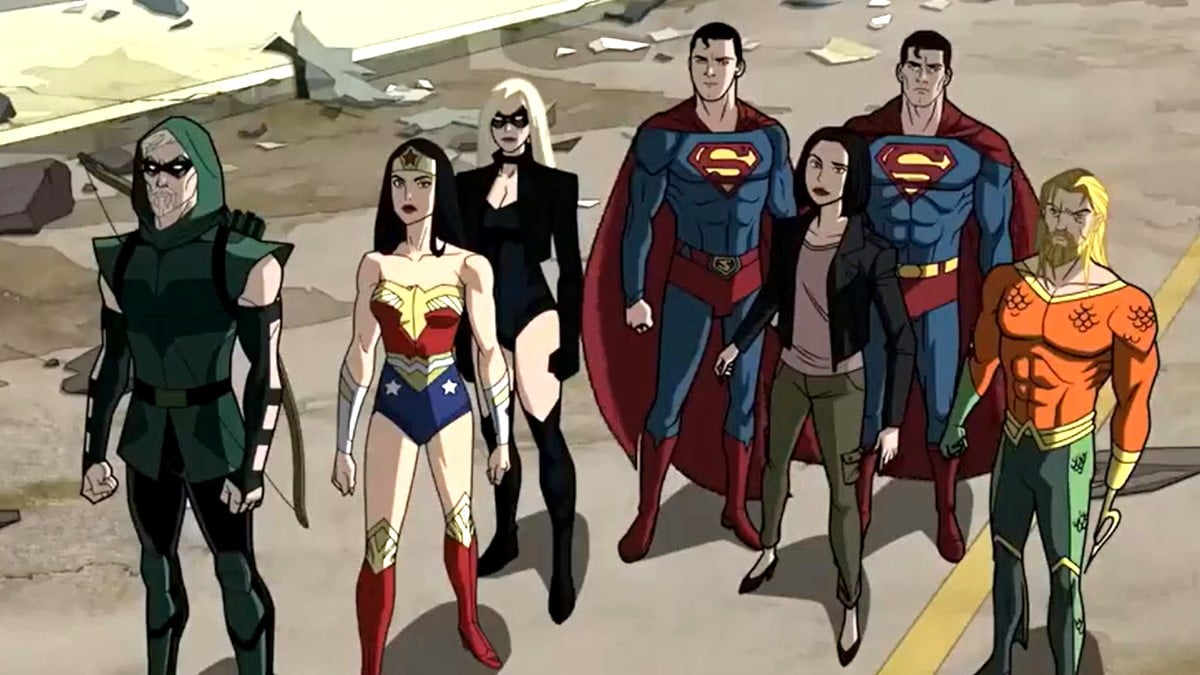Warning: This article contains spoilers for Justice League: Crisis on Infinite Earths — Part Three
DC decided to give one of the comic book universe’s most ambitious ever stories the animated treatment when it launched the three-part Justice League: Crisis on Infinite Earths, with Part One releasing in January 2024.
The movie saw the Anti-Monitor, the Monitor’s evil counterpart, unleashed on the DC multiverse and embark on a relentless quest to destroy the various Earths the multiverse comprises. The movie chronicles the Monitor’s efforts to unite heroes from across the multiverse to stop it. The sequel, Justice League: Crisis on Infinite Earths — Part Two, continued the cosmic battle, with more familiar good (and bad) guys from DC’s various universes joining the fight to save all reality.
The final installment in the trilogy, Justice League: Crisis on Infinite Earths — Part Three, hit home media on July 16, 2024. It depicts the multiversal characters’ final battle with the Anti-Monitor and neatly wraps up DC’s “Tomorrowverse,” the second installment of the DC Animated Movie Universe (DCAMU), which began with 2020’s Superman: Man of Tomorrow.
But how did the Justice League: Crisis on Infinity Earths trilogy end, and was it a satisfying climax? Please note that this next part contains spoilers.
How does Justice League: Crisis on Infinite Earths – Part Three end?
Justice League: Crisis on Infinite Earths — Part Three depicts the Ant-Monitor rampaging across the multiverse, destroying everything in its path. Several attempts to kill the powerful being fail, including an idea concocted by Lex Luthor that would see Superman (and ultimately Supergirl) absorb the power of 52 suns and sacrifice himself by detonating that power on the Anti-Monitor. Therefore, additional action is taken.
While the united heroes initially try to hide several universes inside the Bleed — a concealed cosmic zone where several worlds and realities take refuge — it soon becomes apparent that if the multiverse is left as it is, more Anti-Monitors will start appearing and attempting to destroy it.
Therefore, the heroes surmise that the best course of action is to reduce the multiverse to a single universe where they will all reside. They use the Miracle Machine to reset reality with a new Earth-Prime. Sadly, Wonder Woman’s channeling of the machine to utilize its power results in her dying, but she saves the multiverse in doing so and the heroes’ plan to create a new Earth-Prime works.
It’s a fitting ending to the trilogy and the “Tomorrowverse.” Still, it resulted in the sad loss of several popular animated universes, including the universes where Superman: The Animated Series and Batman Beyond took place.
While the movie saw Mark Hamill’s triumphant return as the Joker, it also saw Kevin Conroy’s posthumous final performance as Batman. Conroy sadly passed away from intestinal cancer in 2022, but Justice League: Crisis on Infinite Earths — Part Three is a fitting swansong for him, as it’s the best installment in this trilogy.
You can now watch Justice League: Crisis on Infinite Earths — Part Three on Amazon — and we thoroughly recommend you do so.
